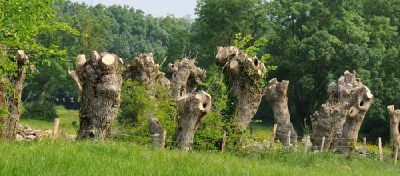 Pollard trees
Pollard trees
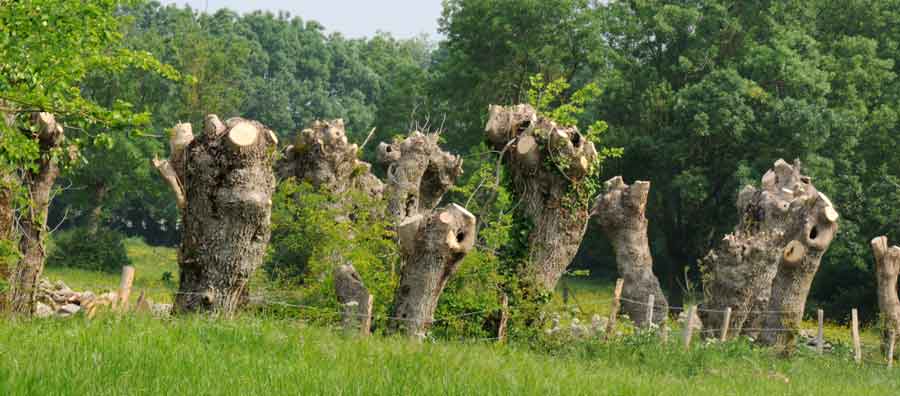
Pollard trees are a source of biodiversity in our countryside. They can be found in all types of landscape : mountains, plains, hills, fields, but also in towns and cities. These plant sculptures are a precious heritage in more ways than one, inherited from the idea of harvesting the crown of the same tree several times during its lifetime. Pollard trees have a variety of uses : economic, ecological, aesthetic, cultural, etc.
Description

An elder is a tree that is periodically pruned to the same height to produce wood, fodder or fruit over the long term. It is not the species of tree that makes it a pollard tree, but its regular pruning.
- Either it is always topped at the same height (trunk and main branches : topping) and it becomes a pollard (or head) because of the "big head" that forms over time where the topping is done, topped by a crown of bushy branches.
- Or it is pruned laterally (pruning), at the junction of the large branches with the trunk, in which case it becomes a pruner or ragosse with a long, gnarled trunk.
As these trees are pruned back, their silhouette changes quite rapidly, becoming completely different from the natural shape in the absence of human intervention (high-growing tree).
Between the pollard and the pruning, there are a multitude of combinations : a pollard tree can have several heads, several trunks, several arms. After each recutting (pruning), latent buds emerge to form new shoots (replacements) and covering beads form on the cut branches. This living tissue more or less covers the cuttings and prepares new buds. As the tree is pruned again and again, the beads form folds and swellings that give the pollard trees their distinctive appearance. If pruning cycles are regular and sufficiently close together, new shoots can be produced for centuries, even if the pollard tree is hollow.
The pollard tree is the "peasant" tree, useful par excellence, which we prune assiduously to get the maximum benefit from it, or to contain its development, while respecting its biological requirements as much as possible, and to perpetuate its resource : the need to produce more with the greatest possible economy of means and space.
The pollard tree represents a wealth of know-how and experience of plant engineering in the service of the small-scale green economy of yesteryear, but above all it represents a formidable potential for the future and for modernity, the challenges and scope of which are not clearly understood.
The issues involved in rehabilitating it for our agricultural production and all kinds of development are :
- Carbon storage.
- Biomass production.
- Hosting biodiversity.
- Protecting the environment and the land.
The pollard tree brings together all aspects of diversity : diversity of environments, landscapes, forms, uses and products. The very concept of the pollard tree reflects this total vision of thetree, which is used for everything and from which nothing is lost : branches, twigs, fruit and foliage, poles, faggots and twigs, so many interests and profits provided by a single fixed capital : roots and trunk. This 'capitalist' analysis of the tree sheds light on the considerable potential we could have if we developed and managed our local tree heritage, making it bear fruit and providing a profusion of energy, raw materials, soil fertility and vitality to our environments and landscapes.
Many forms, many situations
The "pollard tree" is the result of a tree management technique in which the trunk or main branches are cut to a greater or lesser extent, to encourage the development of shoots that are periodically harvested. This technique is generally applied to most deciduous trees, more exceptionally to conifers.
Depending on the species and the pruning interval, these shoots, cut at the same level, mainly provide firewood, timber and fodder. A veritable powerhouse of renewable production, a remarkable ecosystem, a reservoir of biodiversity, a landscape marker and an original cultural heritage, the pollard tree once played an important role in the economy and in rural landscapes.
Often discreet in the landscape, pollard trees are nevertheless very present, both in towns and in the countryside : isolated, in small groups, in orchards, in hedges, in rows, along a road or a path, beside a canal or a stream, in towns, in open fields or even in woodland...

The pollard
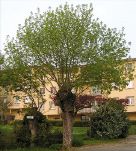
The pollard has a large head (trogne) : a swelling of the trunk formed by successive scarring at the same level. The cutting height generally varies from 2 to 3 metres, and was determined by the size of the animals grazing below so that they could not reach the young shoots.
Ragosse or pruning
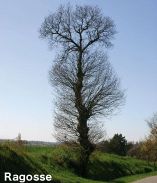
Ragosse pruning consists ofpruning the lateral branches flush with the trunk. Ragosses or prunings are specific to Brittany, particularly the Rennes basin. The branches harvested were used in bundles, and when mature, the bole was used for lumber (particularly carpentry) or firewood.
The candelabra
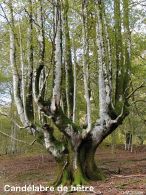
The candelabra is a pollard tree with several heads : during formation pruning, the tree was not completely topped, but its supporting branches were cut off. The most famous candelabra are the beech trees in the Iraty forest in the Basque country, once used to produce charcoal for steel foundries and as lumber for shipbuilding.
Urban pollard trees
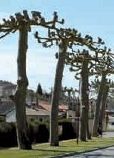
Pollard pruning ensures that the height of the adult tree is controlled, which means that trees can be planted with greater peace of mind in towns, along roadsides or near buildings.
Cat's head pruning
Cat's head" pruning is mainly used in urban environments, where theaim is no longer to produce biomass but rather to create trees with an "architectural" growth habit and contained volume.
Plessage
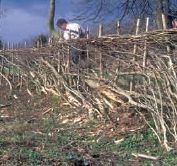
Plessage is a traditional technique for pruning living hedges. A pleated hedge is formed by splitting the trunks of the shrubs that make up the hedge close to the ground. The split shrubs are then inclined and braided with stakes spaced 40 cm apart, or with some shrubs left vertical. Some pollard trees are the remnants of former folded hedges.
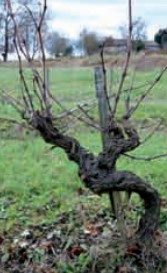
The vine is probably the oldest form of pollard tree to be found. It is pruned regularly to stimulate fruiting, just like olive trees.
A diversity of species
With the exception of a few species, most deciduous trees can be pruned to a pollard tree shape. The most common species include : oak, willow, elm, ash, plane, mulberry, hornbeam, field maple, beech, black poplar, lime, chestnut, etc. Depending on the region, the environment and the production required, pollard trees of one species or another developed : white mulberry in silkworm-producing areas, elm and ash in livestock farming areas, oak and hornbeam for firewood, willow for basketry, plane and lime trees for pleasure in urban areas, etc.
You could say that a pollard tree is a trans-generational tree, because it is both old and young, alive and dead. It is capable of uniting all the ages of life. A hollow or fungus-bearing tree does not mean that it is dead or that it will quickly wither away. The dead wood is in the centre of the tree, while the living wood, where the sap circulates, is at the edge of the trunk, just under the bark. So even a hollow fruit tree can continue to produce fruit.
Multiple uses
Supplementary fodder, timber, firewood or other domestic uses - depending on the species, the frequency of pruning and the size and quality of the branches harvested, there are many uses for pollard trees.
Lumber and services
Basketry
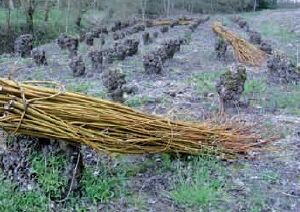
When pruned annually, willows, also known as osier, produce straight, flexible strands used in basketry. As well as producing baskets and other woven objects, these branches were also used to bind vine shoots and sheaves of wheat.
Posts, poles, fascines and fence posts
In addition to their main functions, these poles were used for other purposes, such as securing riverbanks, calming the waters, or for various domestic purposes (staking vines and orchards, tending livestock, etc.).
Carpentry and woodwork
The trunks of pollarded trees, which are generally gnarled and resistant, as well as some of their particularly shaped shoots, were once sought after for making beams and for shipbuilding. Their highly decorative burl wood is still highly prized by cabinet-makers and marquetry experts for the manufacture of furniture and luxury items. These include oak, elm, black poplar and ash burls.
Wood energy
Before the advent of fossil fuels (mineral coal, fuel oil, gas), wood was the main source of heat energy. Thanks to the diversity of its products, wood could be used to meet all domestic, craft and industrial fuel needs.
The bundle
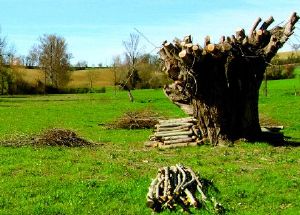
The finest branches resulting from pruning were carefully gathered into bundles, which were burnt by the millions each year to meet the energy needs of the home (fireplace, bread oven, etc.) and certain craft and industrial activities (potteries, brickworks, tile works, lime kilns, etc.).
Charcoal
Before the use of fossil fuels, charcoal was used to fuel the metal and glass industries. It was made from pruned wood and processed on site by charcoal makers. Beech, oak and hornbeam were used for their high calorific value.
Logs
More valuable than faggots, large-diameter branches are used to make logs for fireplaces, closed hearths and stoves. Faced with the ever-increasing cost of fossil fuels, firewood is enjoying a revival of interest that is set to increase over the next few years.
Wood chips
The advent of tools for shredding large branches means that prunings can now be recycled in a new form : wood chips, which are currently used to supply collective and industrial boiler rooms.
Wood fertility
The appearance of cavities following pruning is accompanied by the formation of compost resulting from the decomposition of the wood and the addition of organic and mineral materials by the wind and birds. This potting soil, also known as "pollard tree blood", is a precious material that used to be harvested to prepare seedlings and enrich the vegetable garden.
From time immemorial, pollarded trees have contributed to enriching the soil through thebiomass of their leaves and fine roots, which decompose annually and return various mineral elements, includingnitrogen and carbon, to the soil.
RCW (Ramial Fragmented Wood) is shredded green twigs and small fresh branches, used as mulch or incorporated into the soil. The use of RCW seems to be an interesting way of restoring life to cultivated soils. As the use of faggots has virtually disappeared, shoots with a diameter of less than 10 cm harvested when pollarding trees are often burnt. With RCW, they find a new outlet in line with the new agri-environmental challenges (water, soil, biodiversity, energy, etc.) and society's expectations. Fertility can and must be produced in situ.
Forage
Pollarded trees are veritable aerialmeadows. In the past, harvesting the foliage and young twigs of trees was practised in all livestock-raising regions and provided a significant source of fodder, particularly in mountainous areas or during periods of summer drought.Elm, ash and white mulberry, renowned for the nutritional quality of their fodder, were the most sought-after species. With climate change and droughts on the horizon, this more or less abandoned practice will regain its nobility and usefulness.
The "purification station" pollard tree
New regulations require rainwater to be collected, particularly in urban and industrial areas and on housing estates. An alternative to collecting and settling basins could be to create planted basins planted with pollarded trees. These areas, similar to wetlands, in addition to their drainage role, would contribute to biodiversity, the production of biomass, the reconstitution of wet meadows and the embellishment of sites and the living environment, offering recreational areas for young and old alike.
Ivy and privet
Ivy uses trees as a support; it does not parasitise them and is not a nuisance. Its very late flowering gives bees and other pollinators their last pollen harvest before winter, and its many fruits are a much-appreciated winter resource for birds. In most cases, therefore, it should be kept, but when it is planted directly in the soil of a pollarded tree, it needs to be managed. Firstly, its weight can be detrimental to the tree's mechanical strength. On the other hand, it blocks the light to the dormant buds, preventing new growth. A real skyscraper for biodiversity. When pruning a tree, it is therefore preferable to cut it back.
A refuge for biodiversity
The pollarded tree is also a place of life and resources for many animal and plant species. As these trees age, they hollow out, the central part deteriorating while the periphery continues to develop. Firstly, at the "head" of the tree, the decomposition of the leaves, the particles carried by the wind and the accumulation of bird droppings all contribute to the formation of a specific soil favourable to the development of so-called epiphytic flora (ferns, wild flowers, trees and shrubs, mosses, lichens, etc.).
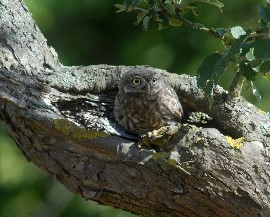
The trunks of pollarded trees then form numerous cavities and crevices that are attractive living spaces for a variety of fauna that take refuge and feed there. In these natural crevices or those dug by woodpeckers, a whole range of species will live one after the other or cohabit : cave-dwellers, insectivorous passerines(titmice, nuthatches, redstarts, etc.), nocturnal birds of prey (birds of prey), birds of prey (birds of prey), birds of prey (birds of prey)...), nocturnal birds of prey (owls, tawny owls, etc.), squirrels, dormice, martens and certain bats, not forgetting the beetles and pollinating insects that will make these old trees their home.
So the pollarded tree is a real ecosystem with many uses that it's important to preserve.
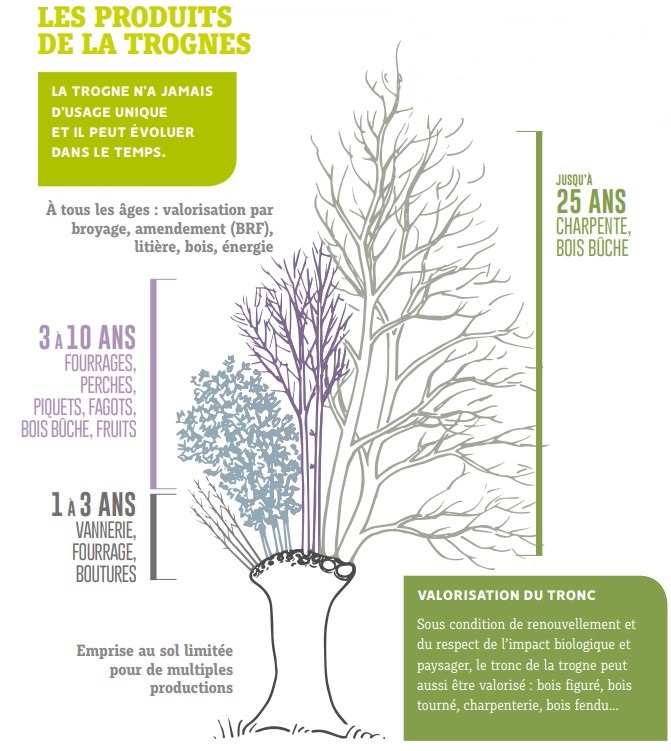
A threatened heritage
Forgotten and abandoned
The motorisation of agriculture, the advent of fossil fuels, the depopulation of the countryside and the loss of interest in country trees have consigned many pollard trees to oblivion.
Wood production is always profitable for the most enterprising. However, farmers stopped using pruned wood and a whole tree culture almost died out. Even though the custom is still alive and well in some woodland and mountain regions, many pollard trees have been abandoned. In the best cases, they regain their free form and natural appearance without damage, so much so that only the trained eye can distinguish them. But more often than not, when a pollard tree ceases to be pruned, its branches grow larger and heavier, providing a hold for the wind which, as a result of the imbalance, threatens the integrity of the entire tree.
If they are not renewed, pollard trees and their animal and plant entourage will naturally disappear, depriving us of a precious resource and biodiversity.
Pillage and massacre
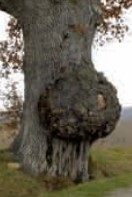
The disappearance of pollard trees is also greatly accelerated by theirabusive exploitation. Wood from country trees is highly sought-after, particularly trees from the bocage or pollard trees, for their"burr wood", which has become rare and has a very high commercial value. This value is underestimated by the sellers themselves, who sell off their old trees because they lack the majesty of forest trees. And very often, for the sake of a few snippets of precious wood, an entire landscape is turned upside down, an entire ecosystem is sacrificed. At the end of 2010, in the space of a few days, more than 700 pollard trees were literally pillaged in the Anjou-Touraine region.
The pollard trees business
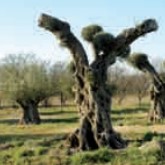
The olive trees are victims of their own facies. In recent years, planting a hundred-year-old olive tree with a tortured silhouette in your garden has become very fashionable. Old olive trees are often bought on the cheap in Spain and resold at a premium in France. It is estimated that within 20 years there will be no old olive trees left in Spain, a veritable plundering of the natural heritage and soil.
Pollard trees and agroforestry
Agroforestry combines trees and crops on the same plot. Agroforestry plots combine wood production with plant and animal production. When pollarded, agroforestry trees provide farmers with earlier and more regular income, and their crowns compete less with crops. INRAe in Montpellier has undertaken experiments.
A promising future
At a time of sustainable development, when we are looking for solutions to produce more while preserving natural resources, the pollarded tree offers a simple, effective production and protection model that can be reproduced at will.
A versatile model, adaptable to all situations
One of the major challenges facing our society is to reclaim and make the most of rural trees, and the pollarded tree is the most effective expression of this. The pollarded tree alone can meet a number of combined objectives, covering economic, ecological and aesthetic needs.
The political context is now more favourable to trees : support for theestablishment of agroforestry systems, changes to the cross-compliance requirements for agricultural subsidies, environmental certification for agricultural businesses, the Objectif Terres 2020 plan, the Stratégie Nationale pour la Biodiversité, the Trame Verte et Bleue du Grenelle de l'Environnement, the Climate and Energy Package, etc. This growing awareness is reflected in a range of innovations, and involves ongoing work on inventories, protection, knowledge, information, research and development. Towns and countryside need trees more than ever. There is an urgent need to anticipate sustainable management and implement appropriate technologies.
Producing wood and biomass
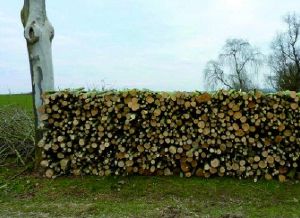
Pollarded trees can be used to meet :
- Growing demand for timber from noble species.
- Increasing demand for wood shavings. The prunings from a pollarded tree can produce significant quantities of woodchip, a clean, renewable energy source that fuels highly efficient boilers.
Protecting the environment and human activities
Refuge for biodiversity (including crop helpers and pollinators), air conditioner, soil improver, carbon fixer, etc. Privet also makes a particularly positive contribution in terms of water :
- Hydration of arid environments or purification of wetlands.
- Protection of water catchments and waste water treatment areas... while enhancing the value of these difficult yet highly productive sites.
"Landscaping and landscaping
Pollard trees have character and add lasting beauty to built-up areas, green spaces and public spaces, as well as roadside verges. Places where it is necessary to control the growth of trees. An original way of reintroducing trees to the urban environment.
Creating and maintaining a pollard tree
Better wind resistance, reduced water requirements, compartmentalisation and resistance to parasites... Pollard pruning allows trees to live longer than when growing freely, provided the pruning cycle is not interrupted.
Training pruning
A pollarded tree is pruned several years after planting, or as soon as the diameter has reached 5 to 10 cm. The tree is topped at the desired height. The main stem must be cleanly cut to ensure that the crown around the section grows properly. The tree also needs to becompletely pruned to prevent it becoming a "bush". This operation can be repeated in the first few years if suckers grow back on the body of the tree.
Other toppings can be done every 3 to 4 years to shape the "head" of the tree. Thereafter, topping will be spaced out as the tree grows.
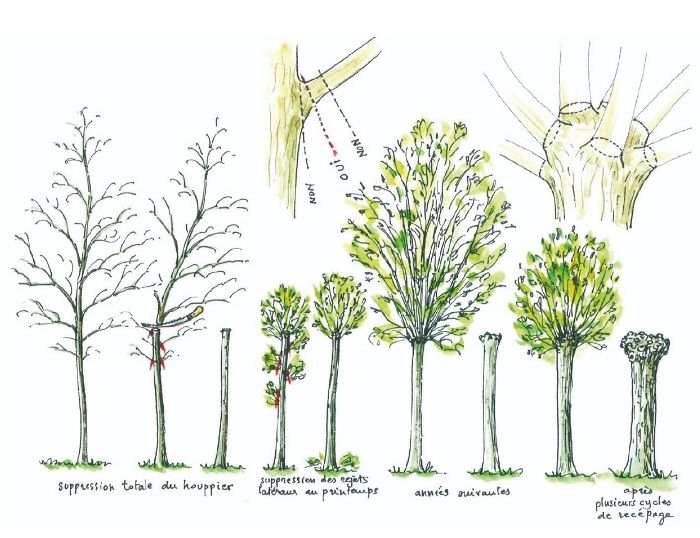
The first training pruning of the pollarded tree is carried out during the vegetative rest period (mid-November to mid-March) to conserve as many reserves as possible for the next growing season.
A pollarded tree can also be formed from cuttings (particularly for willows and black poplars) taken directly from a mature tree.
Maintenance pruning
Once the "head" has formed, a pollarded tree is maintained at regular intervals. The frequency of pruning varies widely, from 1 to 20 years depending on :
- The species of tree : Hardwoods such as oak can be pruned at 10-year intervals. For fast-growing woods such as willow and poplar, it is advisable to prune every 4-5 years. More frequent pruning promotes vitality but does not encourage the formation of hollows favourable to biodiversity.
- The land where it grows.
- Thedestination of the wood harvested (fodder or firewood).
For example, a willow tree is pruned every year. It is estimated that the stems should not exceed 15 cm in diameter. Care must be taken to cut in the same place every year to avoid disturbing the tree and destroying the reserves accumulated in the head.
As with any severe pruning of a tree, pollarding is best carried out between mid-November and mid-March, when sap and reserves have descended into the roots. Unless you want to harvest fodder ! Choosing this period alsoavoids disturbing nesting birds. It is important to cut the branches above the scarring bead to avoid weakening the tree and the appearance of diseases linked to colonisation by parasites.
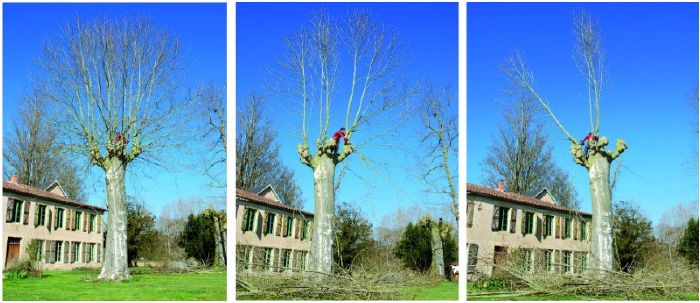
Warning : when the branches are very large, pruning can be dangerous. You should therefore take the precaution of cutting off the branches in several stages from the top.
Restoring a pollard tree
After a period of neglect, pollard trees can sometimes be brought back into use. However, if the branches have grown too large in diameter, it is preferable not to attempt to prune them again, as the healing process would be too difficult and could be detrimental to the tree. Older trees that have not been tended for more than 15 years may have branches with a diameter of more than 20 cm. If the branches are not cut back, there is a risk that they will give way under their own weight if they are unbalanced at the top of the tree. If they are cut back, a large section will be opened up, which will take a long time to heal and the recovery of dormant buds will be more uncertain. On the other hand, the larger the stems, the more reserves are removed from the tree, which will be more vulnerable to pathogens. This is another argument in favour of more frequent harvesting.
There are two possible answers, depending on the species of tree
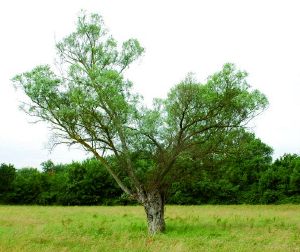
- Trees with soft, brittle wood (willows, poplars), which recover easily, should be pruned because the risk of splintering is much greater than the risk of failure to recover.
- Trees with harder wood (such as oaks and ashes) can be left in free form if their structure is balanced and their mechanical strength satisfactory. Otherwise, it is better to risk pruning them.
Alternative method
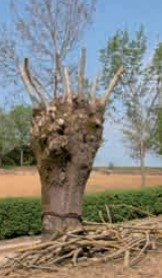
- 1st winter : Partially exploit the crown by leaving several main branches evenly distributed, possibly reducing their length at a fork : shortened beanpullers.
- 1st and 2nd spring : Allow the new crown of shoots to develop.
- 3rd winter : If the new shoots are sufficiently numerous and vigorous, the shortened sap-pullers can be used.
To find out more
- Pollard trees, the farmer's tree with a thousand uses - Dominique Mansion - Ouest France - Nov 2010.
Sources
- Trognes le livret des arbres-têtards - Arbres et Paysage 32.
- Groupe National Trognes.
- Les arbres têtards Source de biodiversité dans nos campagnes - AFAC Agroforesterie.
- Pollarded trees - Loire-Anjou-Touraine Regional Nature Park.
- Trognes - Maison Botanique - European Trognes Centre - Living workshop.
- Le Petit Guide du trogneur - French Agroforestry Association and partners, 2018.